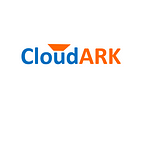Multi-instance multi-tenancy (MIMT) is an architecture that enables multiple tenants to have a separate instance of an application while sharing the underlying Kubernetes cluster. Each tenant has its own isolated instance of the application running on the same Kubernetes cluster, allowing multiple tenants to share the same infrastructure while maintaining the isolation of their resources.
In a Kubernetes context, MIMT is implemented by creating separate Kubernetes namespaces for each tenant. Each namespace contains its own set of resources such as pods, services, and deployments that belong to the running instance of the application in that namespace. By using separate namespaces, each tenant’s application instance is isolated from other tenants, while sharing the same Kubernetes cluster infrastructure.
MIMT architecture provides several benefits for organizations that need to deliver any cloud-native application as-a-service, including:
- Accelerated time to market: MIMT architecture on Kubernetes enables teams to launch services of any cloud-native application without having to make changes in the application for multi-tenancy. And hence teams can launch B2B SaaS for any application within a week or two.
- Improved scalability: MIMT provides better scalability, as adding new tenants is as simple as creating a new namespace and deploying the application instance to that namespace. MIMT allows organizations to scale their service quickly and easily to support new tenants.
- Security: MIMT security is achieved by isolating each tenant’s resources from other tenants, preventing unauthorized access or data leakage. Each tenant’s resources are isolated from other tenants using Kubernetes policies, reducing the risk of security breaches.
- Better resource utilization: MIMT reduces infrastructure costs and improves resource utilization by allowing multiple application instances to share the same underlying infrastructure. By using a shared infrastructure, MIMT allows better management of resources and reduces infrastructure costs.
CloudARK’s open-source KubePlus Kubernetes Operator offers an automated solution to implement multi-instance multi-tenancy (MIMT). KubePlus takes an application Helm chart and wraps it under a Kubernetes API (CRD). Whenever an application instance is created using this API, KubePlus ensures that every instance is created in a separate namespace and that the required multi-tenancy policies are applied in order to ensure isolation between instances. The API also supports RBAC, version upgrades, and additional customizations for each instance.
KubePlus’s enterprise product built on top of open source KubePlus simplifies the management of multiple application instances from a centralized location with an easy-to-use UI interface.
In conclusion, MIMT is a powerful architecture that enables multiple tenants to share the same Kubernetes cluster infrastructure while maintaining the isolation of their resources. By using separate Kubernetes namespaces, each tenant’s resources are isolated from other tenants, allowing for better resource utilization, scalability, and security. With solutions like CloudARK’s KubePlus, implementing MIMT architecture on Kubernetes has become easier and more accessible for organizations of all sizes.
